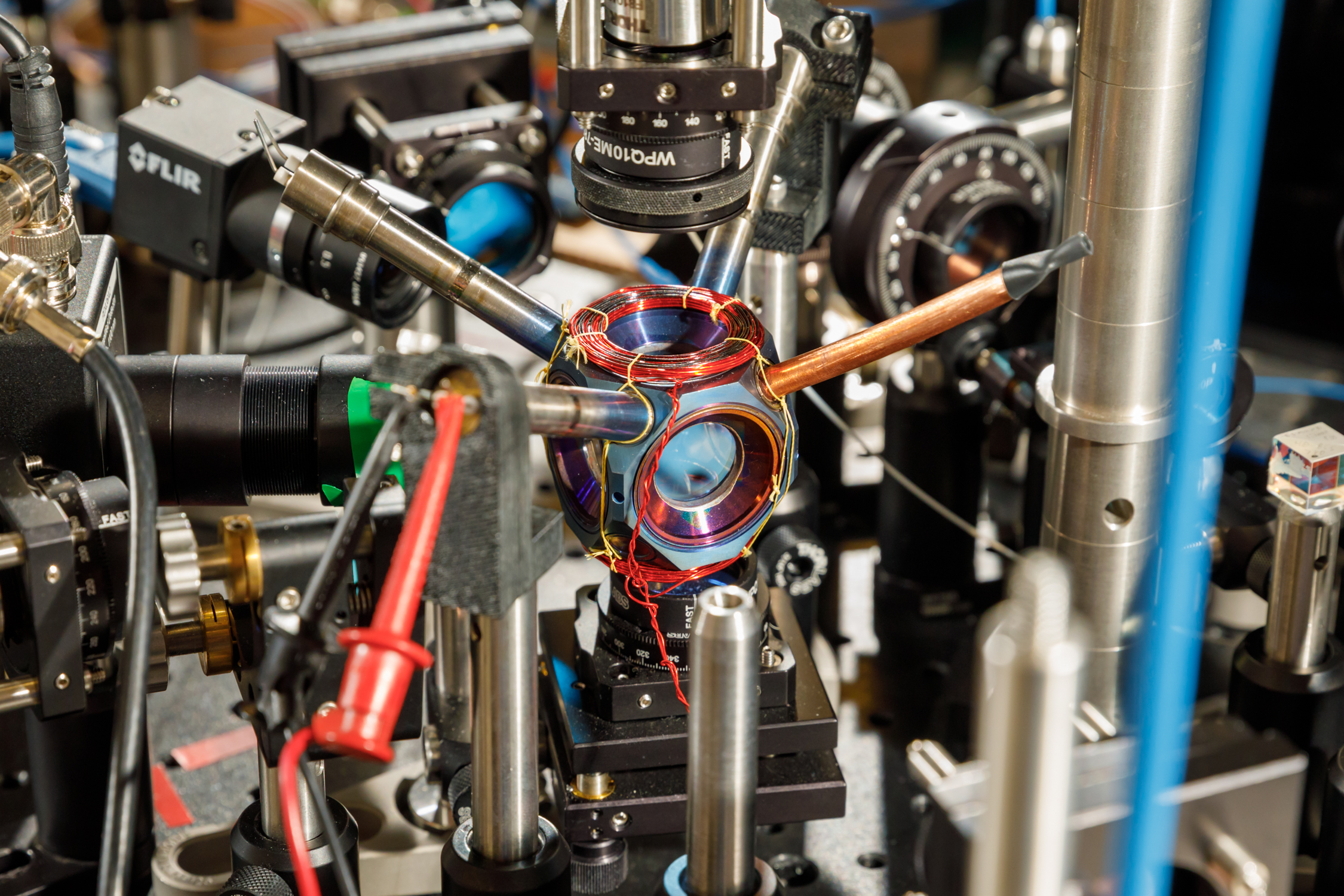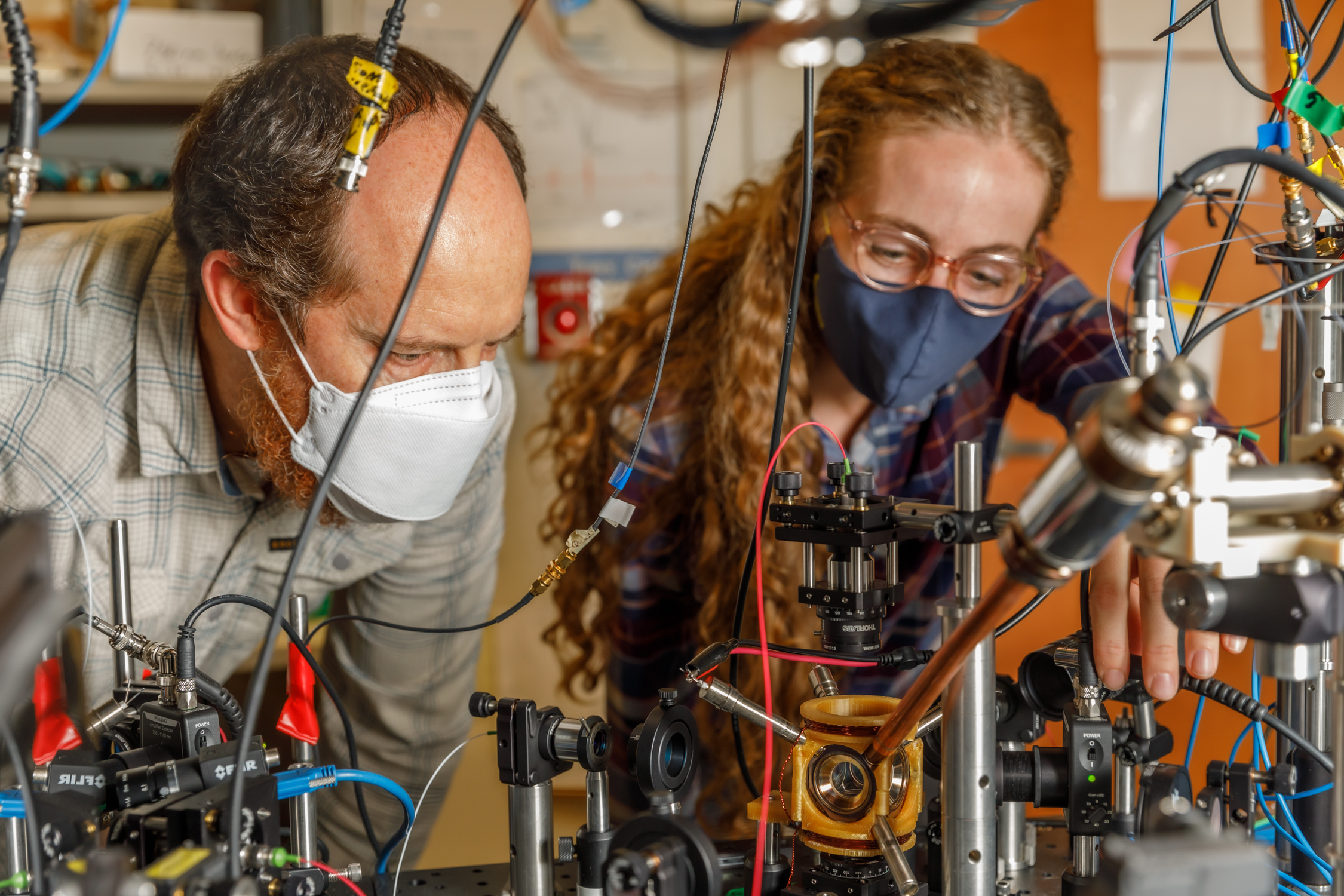Since 1949, Sandia National Laboratories’ primary mission has been to perform science and engineering that ensures the U.S. nuclear stockpile remains safe and reliable. Over the last 70-plus years, Sandia has grown into a large, multi-mission laboratory that studies solutions to many national security issues, including energy, climate change, cybersecurity, hypersonic weapons, and nuclear and chemical security.
For over a year, a compact device designed and built at Sandia National Laboratories has contained a cloud of atoms at the right conditions for precise navigational measurements. This avocado-sized vacuum chamber is the first device that is small, energy-efficient and reliable enough to potentially move quantum sensors — sensors that use quantum mechanics to outperform conventional technologies — from the lab into commercial use, said Sandia National Laboratories scientist Peter Schwindt.
Creating a magneto-optical trap
Sandia developed the chamber as a core technology for future navigation systems that don’t rely on GPS satellites, he said. It was described earlier this year in the journal AVS Quantum Science. The chamber is a titanium cube, 1.6 inches across, with a circular window on each face. Several tubular appendages come out of the corners, that contain the passive pumping devices and a source of rubidium atoms. Inside this chamber Sandia, is making something called a magneto-optical trap where millions of atoms are trapped at ultra-cold temperatures 1/10,000th of a degree above absolute zero.
Quantum mechanics is a physical theory describing the properties of matter, particularly down to the scale of atoms and subatomic particles. It is characterized by a probabilistic rather than a deterministic understanding, in which things have “wave functions”. The outcome is that matter behaves in some nonintuitive ways, including “quantized” or discrete atomic energy levels. Quantum sensors take advantage of the quantum nature of matter to measure things.
Measuring acceleration and rotation
Countless devices around the world use GPS for wayfinding, which is made possible by atomic clocks known for extremely accurate timekeeping that hold the network of satellites perfectly in sync. But GPS signals can be jammed or spoofed, potentially disabling navigation systems on commercial and military vehicles alike. So instead of relying on satellites, Schwindt said future vehicles might keep track of their own position. They could do that with on-board devices as accurate as atomic clocks, but that measure acceleration and rotation by shining lasers into small clouds of rubidium gas like the one Sandia has contained.

In such a device, lasers shine on atoms in the center of the chamber. The atoms are released from the magneto-optical trap and then are measured in free fall, with the lasers as a kind of precise ruler. The atoms are probed in quick succession, so that the change in position over time can be used to find acceleration. When the chamber is stationary, one can measure the acceleration due to gravity. When it is moved, the acceleration and rotation of the device can also be measured. If you know where you started, you can precisely measure your acceleration and rotation, and by continuously tracking these numbers you have knowledge about where you are and the direction you are headed.
Possible applications
Self-driving cars would be a good application for quantum sensor technology, in order to avoid losing navigation capability of a self-driving car when it goes into a parking garage, or really any time it loses GPS signal. But any vehicle (land, air, sea, or space) could make use of inertial navigation. One could also see applications for measuring gravitational field changes, such as those found near oil fields.
This technology most likely would not replace GPS. This is because inertial sensors (devices that measure acceleration and rotation) drift over time and only provide a relative position. Since GPS provides absolute position, it is unlikely to be replaced. However, since GPS is not available in all locations and can be jammed, inertial sensors are very important for applications where a GPS outage could be catastrophic, for example, a plane coming in for a landing.
The challenge of reliable operation
Atomic accelerometers and gyroscopes already exist, but they’re too bulky and power-hungry to use in an airplane’s navigation system because they need a large vacuum system to work, one that needs thousands of volts of electricity.
“Quantum sensors are a growing field, and there are lots of applications you can demonstrate in the lab,” said Sandia postdoctoral scientist Bethany Little, who is contributing to the research. “But when you move it into the real world there are lots of problems you have to solve. Two are making the sensor compact and rugged. The physics takes place all in a cubic centimeter (0.06 cubic inches) of volume, so anything larger than that is wasted space.”
The challenge of reliable operation is a big one. By eliminating the need for ion pumps, the researchers at Sandia have reduced the complexity of operations and improved the reliability. Reducing the size of the vacuum chamber is one critical step but there are others; for example, the control electronics and laser systems must also be reduced. Almost everything in the “real world” is a more extreme environment than the lab, so not only must these devices measure small accelerations, but they need to handle large ones as well. Finally, they also need to handle temperature fluctuations, vibrations and stray electric fields. Engineering the device to handle all of these situations is a big challenge.
The Sandia team is continuing to monitor the device. Their goal is to keep it sealed and operational for five years, an important milestone toward showing the technology is ready to be fielded. In the meantime, they’re exploring ways to streamline manufacturing.






